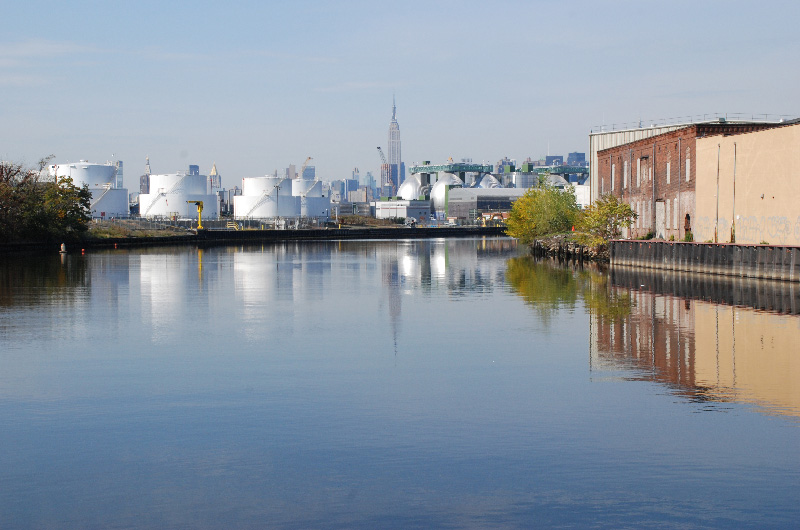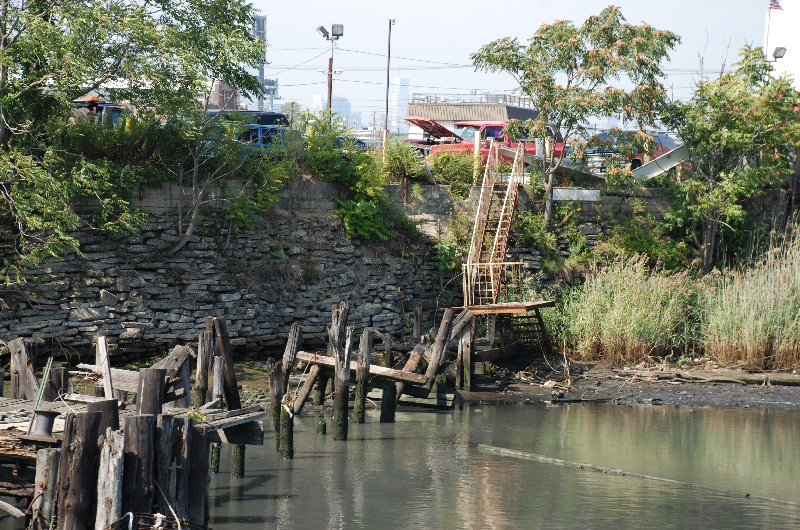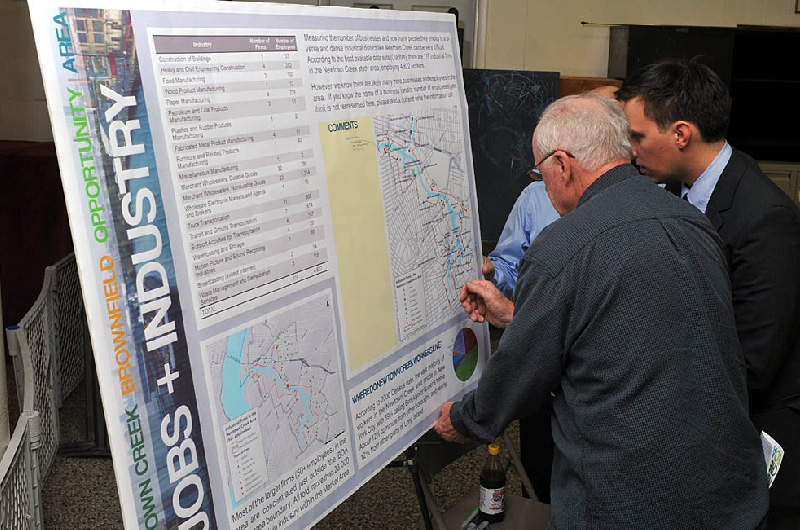Case Study 4
GMDC Conducts a Door-to-Door Survey of 400 Businesses on Newtown Creek

Background:
The Greenpoint Manufacturing and Design Center (GMDC), a nonprofit industrial developer, completed a state and city-funded planning study along Newtown Creek in 2012, focusing on green infrastructure, industrial development, and waterfront access. The study area encompasses nearly 1,000 acres on both the Brooklyn and Queens sides of the creek, which includes hundreds of industrial properties and as many property owners. Reaching out to these owners was a daunting task. To complicate matters, around the same time that GMDC kicked off its outreach process, the U.S. Environmental Protection Agency (EPA) designated the Newtown Creek a national
Superfund Site. Property owners initially pulled back from the state-sponsored planning effort for fear that they could be targeted as legally responsible for the creek’s contamination. At the time, EPA and the New York City Department of Environmental Protection (DEP) sought to engage the public about the federal
Superfund Process, prompting GMDC to distinguish its public engagement from the potentially threatening federal process.

Strategy:
Recognizing the significant task at hand, GMDC initially hired a private planning firm to lead its planning study. The firm, however, performed outreach at a distance and failed to produce “on-the-ground” information reflecting current local concerns and needs. GMDC then hired the Newtown Creek Alliance (NCA), a local non-profit and advocate for the waterbody’s Superfund designation, to survey the property owners. The Alliance knocked on doors, speaking to over 400 property and business owners. One important issue that emerged was the need for bulkhead repairs to revive waterborne commerce along the creek. To replace dilapidated bulkheads, many businesses had to comply with the state Department of Environmental Conservation’s requirements to compensate for wetlands that would be lost when new bulkheads were built. Under the state-funded program, GMDC and the Alliance developed a database whereby property owners could exchange information about property available for wetland mitigation uses, and also urged DEC to streamline its permitting process.
Conclusion:
The collaboration promoted a vision of maritime use consistent with Newtown Creek’s industrial past rather than redevelopment for mixed use. With this goal, GMDC promoted industrial retention and the preservation of maritime support services. By taking an in-person approach to outreach, the GMDC team was able to learn about the genuine needs of property owners and then use the state and city-funded planning effort to raise their concerns with regulators. Simultaneously, the place-based planning team was able to distinguish the
BOA planning process from the Superfund cleanup efforts and alleviate property owners’ concerns of being viewed as potential responsible parties (PRPs) for the creek’s contamination. By promoting place-based planning as a support tool, not a regulatory action, property owners were receptive, and strong relationships were established.
Related Development Strategy

 OER Community311
OER Community311 Search all NYC.gov websites
Search all NYC.gov websites





